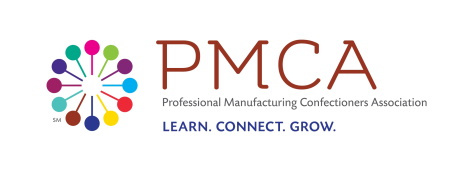Beyond the Basics Seminar: Sugar Crystallization—to Be or Not to Be?

Michelle Schwenk, ADM
Michelle is the group director of carbohydrates and wellness at ADM where she leads a team in developing and characterizing sweetener, starch, polyol and fiber ingredients as well as bioactives and probiotics. Before ADM, Michelle worked at various ingredient companies, including Domino Sugar, Tate & Lyle and Crest Foods. Michelle has a passion for teaching about carbohydrate ingredients and confections and has spoken at various industry meetings, including a 15-year stint at the University of Madison candy school. She has three patents and many publications. She is a member of the board of the American Association of Candy Technologists and the board of the Calorie Control Council. Michelle has a Ph.D. from the University of Illinois, where she looked at the effects of temperature on various sugars.

Elizabeth Hagerman, Warrell Creations
Liz began her career at Warrell Creations in 2017 when she was brought on board by the research and development department as a food technologist. Within a few short months, they knew they had a new outlook on one of their beloved core processes. Exploring new and innovative food products and processes is one of Liz’s main passions. She earned her bachelor’s degree in food science and technology from Oregon State University and received a minor in chemistry along the way. Her experience in the food industry includes everything from food service to interning with Kroger to working as an R&D lab technician — all before finding Warrell Creations. Liz’s focus here at Warrell Creations involves improving and developing products for one of their exemplary core processes — caramel!

Justin May, The Hershey Company
Justin is currently the manager of process optimization for Hershey, where he has worked since 2003 in various roles. He has experience in product commercialization, process optimization and production. Most of his career has been spent working as a process engineer on cost-saving initiatives. This area is where he developed his expertise in understanding how to utilize and control processes to make confectionery products.
Justin has had the privilege to work on some of the world’s most famous and iconic confectionery brands including Hershey’s, Kisses, Reese’s, Almond Joy and York as well as many others. Prior to joining Hershey, Justin studied agricultural and biological engineering at The Pennsylvania State University. His engineering background complements his enjoyment of problem-solving and helping to make things better.
Tuesday Technical Sessions

Jeff Johnson, Callisons
Jeff Johnson joined Callisons in 1996 and is currently the vice president. Jeff has served on several committees of the Mint Industry Research Council. He also serves on the board of directors for the Big Brother and Big Sisters of Southwest Washington.

Nina Puch, Knechtel Inc.
Nina Puch is a senior food technologist at Knechtel with a food science degree from Concordia University. She has significant experience in the confectionery industry focusing in high boils and caramels. Her role at Knechtel also extends to vitamin products, snack bars and gummies.

Dr. Darin Suhka, Cocoa Research Centre, The University of the West Indies, St. Augustine, Trinidad & Tobago
Dr. Darin Sukha is a research fellow at the Cocoa Research Centre, The University of the West Indies (UWI), St. Augustine. He leads the food technology section that works in four thematic areas: 1) research, 2) training and outreach, 3) quality management and 4) product development. Research activities are geared towards producing technology toolkits for fine or flavor cocoa in micro and varietal-based fermentations, traceability and quality standards, niche marketing and geographical indications, as well as cocoa bean quality certification and the development of cocoa-based products (food and nutraceutical). Dr. Sukha is also actively engaged in local, regional and international training and outreach activities on cocoa post-harvest, quality management, sensory evaluation, chocolate making and standards development.
He has worked with many cocoa stakeholders, from farmers to chocolate manufacturers, in different cocoa-producing regions on internationally-funded cocoa projects and consultancies in his +20-year career. Currently he serves on the International Cocoa Organization (ICCO) panel of experts on fine or flavor cocoa, the Working Group on International Standards for Cocoa Quality and Flavour Assessment, the International Panel of the Fine Chocolate Industry Association-Heritage Cacao Preservation Fund and the Cocoa of Excellence Programme technical committee and taste panel for successive editions of the International Cocoa Awards at the Salon du Chocolat. He also chaired the ICCO Expert Working Group on Fine or Flavour Cocoa, Food Advisory Sub-Committee on the review of the CARIFORUM regional standards for cocoa and chocolate products and is current chair of the Trinidad and Tobago Bureau of Standards Specification Committee for cocoa quality.

Stanley Jules, Spangler Candy Company
Stanley Jules is the director–health, safety and environmental for Spangler Candy Company in Bryan, OH. Stanley’s experience includes working at Chase Brass and Copper Co. in Montpelier, OH as a safety technician and Fiat Chrysler Assembly Complex in Toledo, OH as an environmental health and safety professional (EHS).
At Chase Brass, Stanley trained employees on job safety, organized ergonomic assessment, wrote and developed the entire manual of health and safety management system and incorporated task-based risk assessment within the engineering and design process.
At Fiat Chrysler, he implemented EHS training programs and training assessments to ensure required training was conducted. He also conducted regular audits of EHS processes and follow-ups to ensure compliance and advised plant leadership and corporate EHS staff of findings. He analyzed injury/illness experience including ergonomics, identified and tracked injury correlation, determined root causes and implemented correction action.
Stanley Jules graduated from Marshall Collage with a BS in safety technology in 2012. He continued his education by taking many courses relating to safety leadership, OSHA and internal audits. He has been involved in developing safety council programs at Northwest State Community College, OH.
Stanley is fluent in French Creole (Haitian dialect), English and the ability to read and write in Spanish.

Lawrence S. Bouvier, Fuss & O’Neill Manufacturing Solutions, LLC
Larry is a hands-on plant engineering and maintenance leader mentoring, educating and training clients to change culture and build value through world class asset management. He is currently a vice president and equity partner at Fuss & O’Neill Manufacturing Solutions, LLC. He has more than 30 years of experience in heavy industrial maintenance, plant engineering and reliability as a technician, engineer, maintenance and plant engineering manager and project manager in the steel-making, foundry, machining, electroplating and plastics industries. Throughout his career, he has employed a blend of strategic planning and tactical tools while leading teams to create a culture of engagement that achieves the benefits of total productive maintenance. His focus on mentoring, coaching and training of his employees, peers and clients helps them to achieve success by improving their maintenance organizations, establishing best practices and improving processes and equipment reliability.

Perry Bevivino, Rockwell Automation
Perry Bevivino is an account manager for Rockwell Automation. Entering his twentieth year with the company, Perry has focused on consumer product companies, with a goal of helping them drive overall performance through automation and information solutions, including everything from simple process automation to implementation of model-predictive control solutions. Prior to joining Rockwell Automation, Perry spent 14 years working for an OEM, delivering automation solutions to the worldwide hydroelectric industry.
A graduate of Penn State, Perry is a professional engineer registered in Pennsylvania and scoutmaster of Boy Scout Troop 25. He lives in York with his wife (also a PSU graduate) and his 14-year old son.

Tod Galloway, Galloway Company
Tod Galloway was born, raised and still lives in the sleepy little town of Appleton, nestled on the scenic banks of the Fox River in northeast Wisconsin. Nothing in his humble background suggested the heights to which Tod would ascend, and nothing still does.
In his teens and twenties, Tod majored in college. He started by spending three years at Purdue University as a chemistry major. He chose Purdue because his parents thought the University of Wisconsin would be too much fun. They hadn’t anticipated that Tod would even find Purdue to be fun. After a couple years out of school, he returned to study chemical engineering before finally settling on industrial engineering.
As both his youth and his parents’ patience disappeared, Tod joined to family business. Galloway Company is a dairy located in Neenah, Wisconsin, which has been owned and run by the Galloway family for three generations. It manufactures ice cream and fresh frozen custard mixes. It is the largest manufacturer of industrial sweetened condensed milk in the country. It is also the largest manufacturer of alcoholic cream liquors and acidified cloudifiers. Because these products are so boring, it also manufactures remediation oils. These are used to eliminate underground oil contamination (really!).
Tod rapidly rose through the ranks of management (his father retired) and today is vice president of engineering for Galloway Company. This means that just like in college, he spends the family’s money, though not necessarily on himself.
Sometimes, he spends the money inventing things. As a result, like his father before him, Tod has received numerous patents. However, only a few might be of any interest to you. Hint: they involve pigging.
Featured Research: The Pennsylvania State University Fellowship Program

Ryan West, Ryerson University
Ryan West is a recipient of the PMCA Research Grant (2017-2018) for his PhD research at Ryerson University, where he studied how sugar can alter the processing behavior of palm oil for confectionery applications. During his academic career, Ryan has developed statistical models to better understand ingredient-processing interactions, identify optimal processing conditions and overcome empirical limitations. Furthermore, he has investigated the relationship between the physical chemistry, flavor profile and sensory properties of cereal-based systems and became a certified chocolatier prior to the completion of his PhD. Ryan is best reached at ryanwest@ryerson.ca for any inquiries.
Tuesday Night Dinner Speaker

Bernard Pacyniak, retired, Candy Industry Magazine
Former Candy Industry Editor-in-Chief Bernard Pacyniak – now retired – spearheaded the magazine’s editorial direction since 2001. Prior to that, he was editor of its sister publication, Snack Food and Wholesale Bakery, having joined BNP Media’s Food, Beverage and Packaging Division in 1994. Pacyniak has more than 30 years’ experience in B-to-B magazine publishing as a writer and editor, the bulk of that time spent covering the baking, snack and confectionery industries. He graduated from Boston University with a B.S. degree in journalism in 1976 and has won several writing and editing awards from the American Society of Business Press Editors.
Wednesday Technical Session

Lois Duquette, McNees, Wallace & Nurick LLC
Lois is a member of the Intellectual Property and Food and Beverage Practice groups at McNees Wallace & Nurick. She counsels clients in the areas of trademark, copyright, trade secrets, licensing, open innovation, advertising, promotions and food regulation. Lois’s 18 years of in-house experience helps her to provide legal counsel with an understanding of the business challenges likely to be associated with the legal situation.
Lois has experience developing and implementing cost-effective intellectual property strategies that utilize trademarks, copyrights, patents, trade secrets, licensing and litigation to grow and protect brands worldwide. Her experience includes developing and protecting a wide variety of trademarks and trade dresses including both famous marks and new marks, as well as color and product design marks, and surnames and geographic names. In addition, Lois has experience drafting and negotiating license, joint development, open innovation, advertising and promotion agreements, and advising on the intellectual property and food regulatory aspects of mergers and acquisitions. Lois also advises clients on food regulatory matters such as the risk level associated with making different food claims about a product.
Prior to joining McNees, Lois worked for 18 years as an attorney for The Hershey Company where she held many positions of increasing responsibility, with her final role being associate general counsel of global intellectual property and regulatory in which she led a team responsible for intellectual property and food regulatory matters worldwide. In that role, Lois had responsibility for protecting world famous brands such as HERSHEY’S, REESE’S and KISSES including their associated trade dresses and product designs. While at Hershey, Lois also gained experience advising in a wide variety of commercial contract matters. Prior to Hershey, Lois practiced for six years as a litigation associate for a large Boston law firm with an emphasis on intellectual property.

Debra Miller, National Confectioners Association
Debra L. Miller, PhD, is a graduate of Juniata College and The Pennsylvania State University with a doctoral degree in biobehavioral health and a doctoral minor in nutrition science.
As of November 5, 2018, Dr. Miller is the senior vice president of scientific and regulatory affairs at The National Confectioners Association. She is responsible for engaging member companies on global, federal and state/local food policies on nutrition and food safety. Dr. Miller is an integral part of the confectionery industry’s “Always A Treat Initiative”, a commitment to the Partnership for a Healthier America to provide consumers with more information, options and support. She also leads the Chocolate Council, a group of leading cocoa and chocolate processers and producers of chocolate products, which is focused on the unique issues of the cocoa supply chain and chocolate production.
She works closely with member companies, government agencies, other trade organizations and industry affiliates to lead scientific and regulatory affairs for the confectioner’s industry and represents the industry on numerous boards and coalitions in the US. She also represents the International Confectioners Association on CODEX and other technical/scientific issues.
Before joining NCA, Dr. Miller served as the director of nutrition and director–regulatory affairs at The Hershey Company for more than 14 years, where she had the responsibility of developing the internal food and nutrition policy and strategy. She also led the Hershey’s clinical nutrition research program, health professional communications and was the director of the Hershey Center for Health and Nutrition.
Dr. Miller has also served as director of nutrition communications for Dupont Nutrition, St. Louis, MO. She was an assistant professor at Johns Hopkins School of Medicine, where she investigated food intake regulation and led the olestra post-market surveillance clinical trial. She completed a post-doctoral fellowship in obesity treatment at the Harvard Medical School after completing her doctoral degree.
She lives near Hershey, PA with her husband, Ben, and has two children, Ellie and Riley. She is also co-owner of Cocoa Kayaks, LLC, a kayak and water sport outfitter in Hershey, PA.

Ray Major, RAMajor LLC
Raymond Major is a specialist in tropical agriculture, cocoa production, processing and sustainability. He has 41 years’ experience in the chocolate and confectionery industry with more than 20 years’ experience managing chocolate processing facilities in the US and Brazil. He has more than 19 years’ experience in chocolate research, product development and process improvement. During the past 10 years, his focus has been on artisanal chocolate making, fine flavor cocoa sourcing and sustainability. He has been responsible for developing and managing cocoa sustainability programs on the ground, working with cocoa farmers to optimize post-harvest processes and sourcing cocoa from more than 20 origins. Ray is a master chocolate maker who intimately understands cocoa and its potential to express itself in fine chocolate. In recognition of his knowledge and expertise with cocoa, the Hershey Company in 2009 awarded him the status of Fellow.

Marie Loewen, Blommer Chocolate Company
Marie has her B.S. in food science from Purdue University and her A.S. in baking and pastry from Johnson and Wales University. She has been with Blommer since 2011. Blommer is the largest roaster of cocoa beans in North America and manufactures a wide range of chocolates, cocoa powders and compound coatings.
Marie started in product development and now focuses on Blommer’s applications program as senior applications scientist. She develops recipes and tools to help Blommer serve their customers’ needs and understand new ingredient technologies, completes market research to stay on top of industry trends, leads ideation sessions to inspire creativity and bakes a mean chocolate chip cookie. She has previously given talks at Retail Confectioners International, American Bakers Association, and Fine Chocolate Industry Association annual conferences.
Committee Updates

Carly Meck, Blommer Chocolate Company
Carly Meck graduated from Delaware Valley University with a Bachelor’s Degree in food science and earned an MBA in food and agribusiness there as well. She began working at Blommer Chocolate Company in East Greenville, PA in 2010 as a summer intern in R&D. She was hired as an R&D technologist and has now grown to the role of senior R&D scientist – product development. In this role, she develops new chocolate formulas, creates process improvements, provides internal and external training and executes various technical studies.
Carly has been volunteering with PMCA since 2012, when she began as a student mentor after attending the conference under the Student Outreach Program. She has served on several committees including Student Outreach Program, Social Media Sub-Committee and Production Conference – Connect the Future. In 2017, she began the role of Committee Chair of the Student Outreach Program and in 2018 she was invited to sit on the board of directors. In addition, she presented on Mysteries of Conching Revealed at the 2018 production conference, which was chosen to receive the Marie Kelso Award.

Mark Freeman, Shank’s Extracts
Mark is now in his second year as chair of the Membership and Marketing Committee. In previous years, he enjoyed chairing the Student Outreach Committee and meeting the many participating students. Mark has an undergraduate degree in economics from Gustavus Adolphus College and an MBA from the University of Iowa. He started his career in commodity merchandising with Cargill in 1987 and spent his first five years with the company working with the sugar industry in Asia and lived in Manila, Philippines. He joined the Cargill Cocoa & Chocolate group in 1992 and continued in this division until 2007 in various sales roles. In April 2007, he joined Barry Callebaut as vice president of sales. In December 2013, he joined Shank’s Extracts in Lancaster, PA, where he continues to work today. Mark and his wife Chris live in Lititz, PA, where he is active in refugee resettlement and integration.

Eric Schmoyer, Barry Callebaut
Eric Schmoyer is an R&D project manager at Barry Callebaut since 2007, where he works on new product development for regional customers as well as sales and marketing, periodically dabbling in technical services. Eric has R&D responsibilities for the Mona Lisa decorations facility in Hendersonville, NC and the BC chocolate factory in Robinson, IL. He was also involved in setting up, equipping, staffing and starting up the pilot facility in Pennsauken, NJ.
Prior to joining Barry Callebaut, Eric was with the R.M. Palmer Company for almost 20 years. Starting in the molding department and moving to tech services, he worked with raw materials, formulation and processing as well as standard QA duties. In 1998 he was named R&D Lab Manager, where his duties included ideation and new item prototype development, plant scale-ups, on-line troubleshooting, production of sales samples and managing the QA libraries.
He has attended several PMCA courses as well as the NCA Confectionery Residency course in Madison, WI. A member of PMCA for a long, long time, Eric is chairman of the PMCA Research Committee and is active on the Long Range Planning and Student Outreach committees. He is also past president of the American Association of Candy Technologists as well as past Philadelphia Chairperson.

Peter Jamieson, SPI Pharma
Peter Jamieson is senior scientist — quality for SPI Pharma. Over the years in the food industry, Pete has acquired extensive working knowledge and expertise in value-added ingredient formulation and processes covering a wide variety of confectionery applications. Although his food science education from the University of Delaware was mostly theoretical and chemistry-based, he has developed a great appreciation for the “art” within the industry. Subsequently. he has become very involved with PMCA at all levels – as a student, instructor, author and committee member – to not only learn, but also help the organization’s continuing effort to bring the science and hands-on understanding together.

